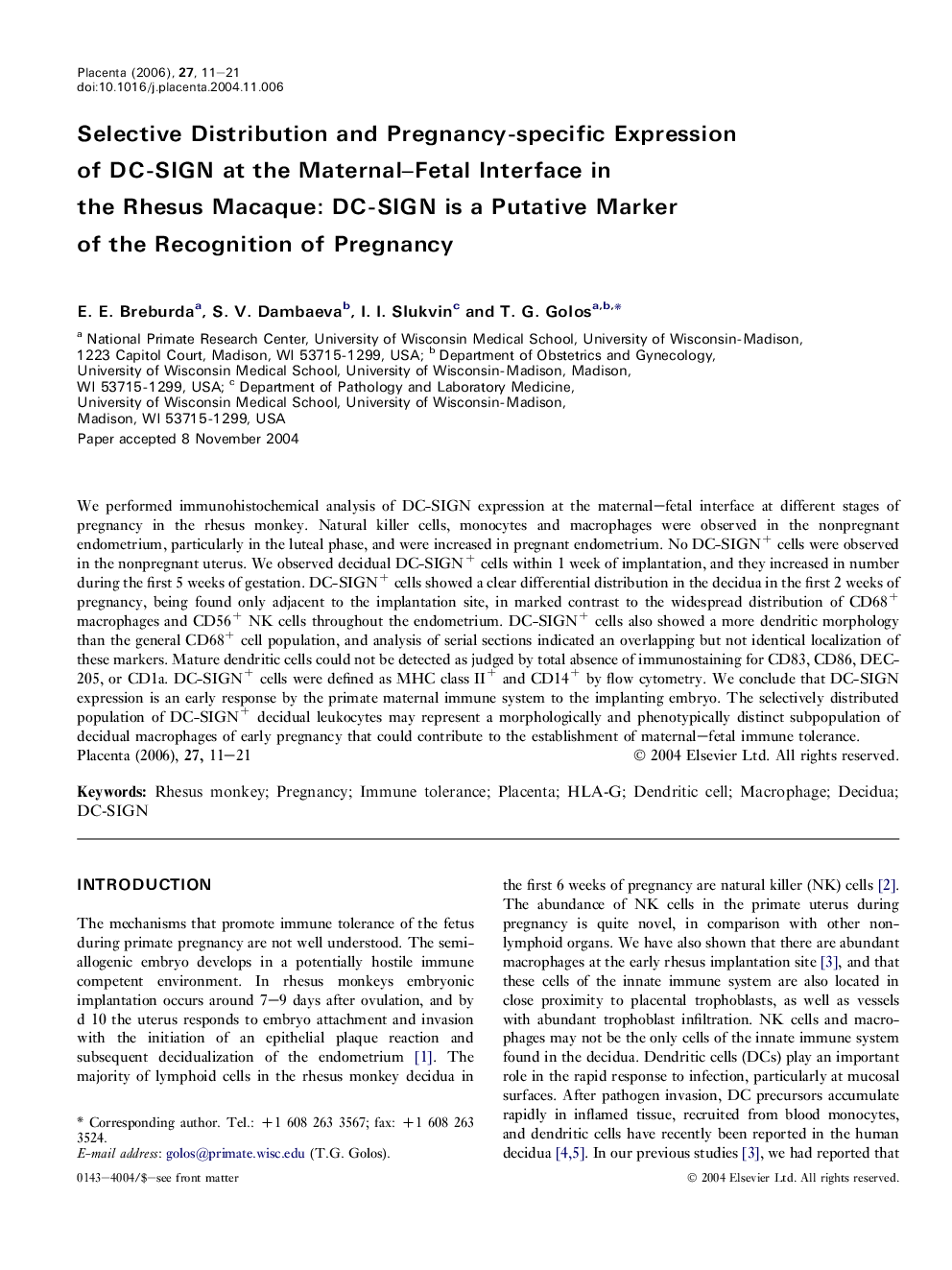| Article ID | Journal | Published Year | Pages | File Type |
|---|---|---|---|---|
| 2790392 | Placenta | 2006 | 11 Pages |
We performed immunohistochemical analysis of DC-SIGN expression at the maternal–fetal interface at different stages of pregnancy in the rhesus monkey. Natural killer cells, monocytes and macrophages were observed in the nonpregnant endometrium, particularly in the luteal phase, and were increased in pregnant endometrium. No DC-SIGN+ cells were observed in the nonpregnant uterus. We observed decidual DC-SIGN+ cells within 1 week of implantation, and they increased in number during the first 5 weeks of gestation. DC-SIGN+ cells showed a clear differential distribution in the decidua in the first 2 weeks of pregnancy, being found only adjacent to the implantation site, in marked contrast to the widespread distribution of CD68+ macrophages and CD56+ NK cells throughout the endometrium. DC-SIGN+ cells also showed a more dendritic morphology than the general CD68+ cell population, and analysis of serial sections indicated an overlapping but not identical localization of these markers. Mature dendritic cells could not be detected as judged by total absence of immunostaining for CD83, CD86, DEC-205, or CD1a. DC-SIGN+ cells were defined as MHC class II+ and CD14+ by flow cytometry. We conclude that DC-SIGN expression is an early response by the primate maternal immune system to the implanting embryo. The selectively distributed population of DC-SIGN+ decidual leukocytes may represent a morphologically and phenotypically distinct subpopulation of decidual macrophages of early pregnancy that could contribute to the establishment of maternal–fetal immune tolerance.
